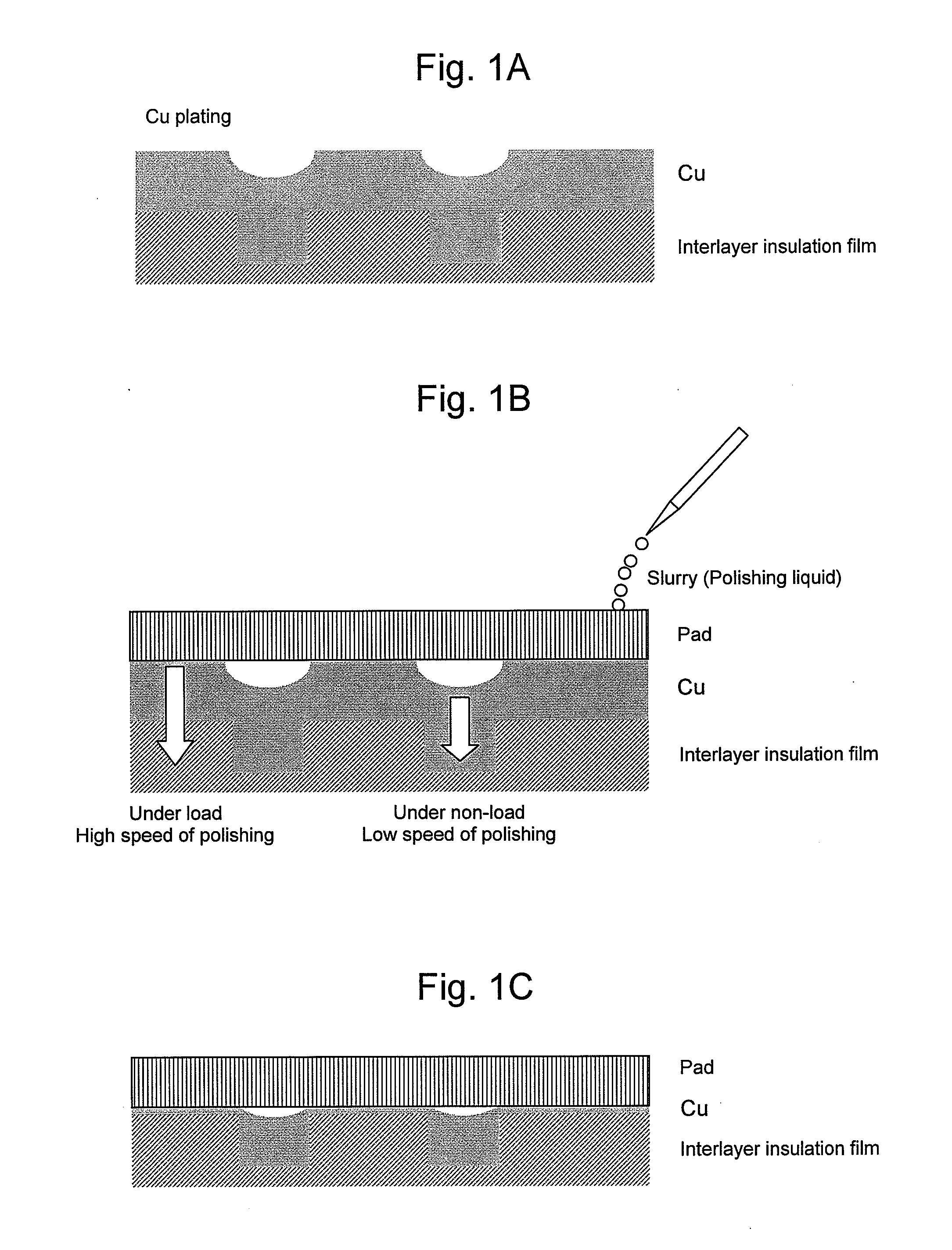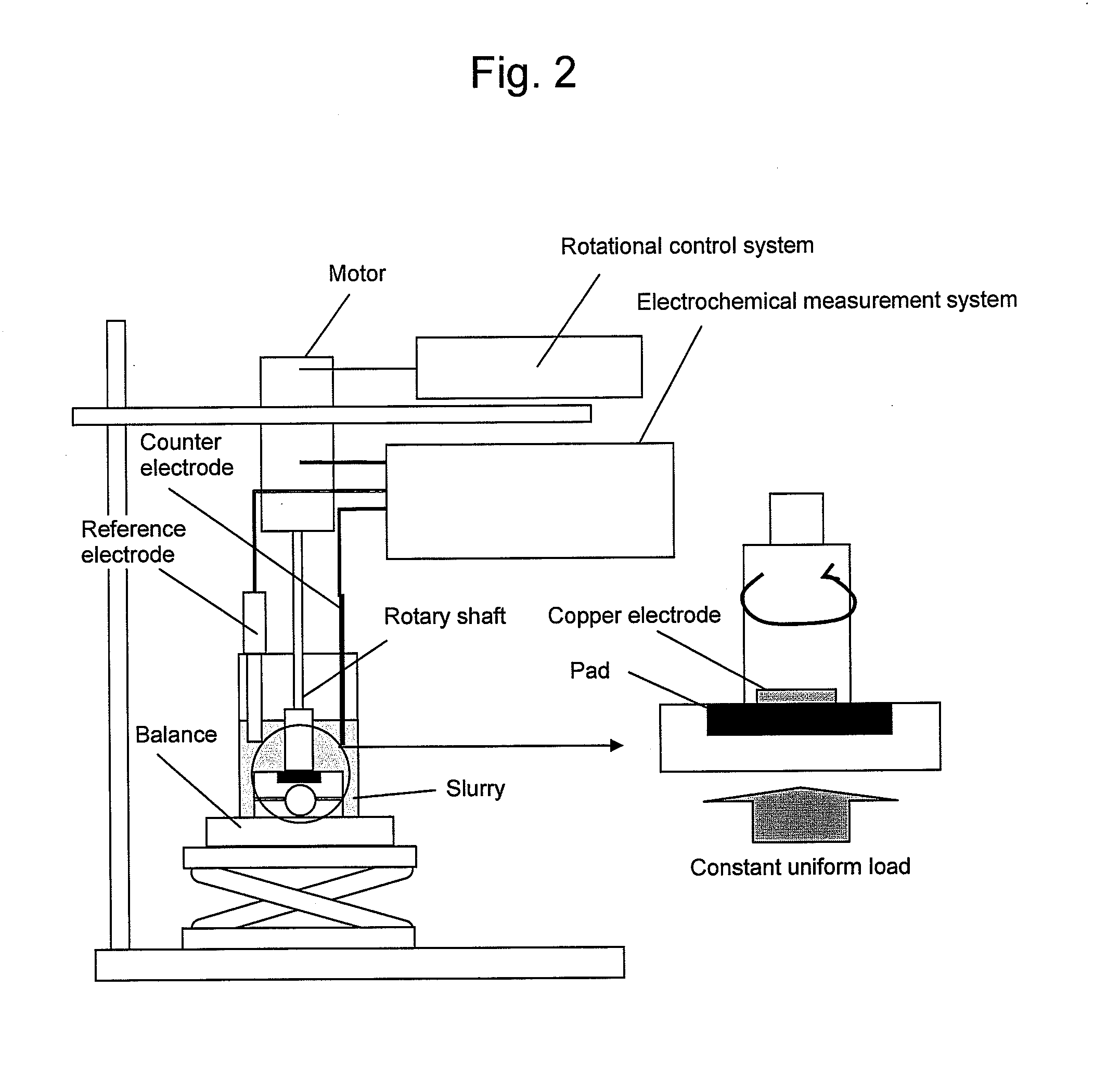Polishing Slurry for Cmp
a technology of polishing liquid and slurry, applied in the field of polishing liquid, can solve the problems of difficult parallelization, difficult to find satisfactory conditions, unsuitable methods, etc., and achieve the effects of reducing ph, high cmp polishing speed and dishing suppression
- Summary
- Abstract
- Description
- Claims
- Application Information
AI Technical Summary
Benefits of technology
Problems solved by technology
Method used
Image
Examples
example 1
[0037]As a result of carrying out CMP using a slurry which contains malic acid of 0.01 M as a copper solubilizer, potassium nitrate of 0.1 M as a solubility accelerator, hydrogen peroxide of 2.0 M as an oxidizer, benzotriazole of 0.025 M as a protective film forming agent, potassium dodecylbenzene sulfonate of 0.0003 M as a surfactant, and 1.0 wt % of colloidal silica of 40 nm as an abrasive grain and has a pH of 2.0 (adjusted by H2SO4), as shown in Table 1, good results could be obtained in both polishing speed and dishing. Exchange current densities in this slurry under non-load and under load, respectively, are shown in Table 1. The ratio of the exchange current densities is 1409, and a difference therebetween is very large.
example 2
[0038]As a result of carrying out CMP using salicylaldoxime of 0.03 M in place of the benzotriazole as the protective film forming agent used in the Example 1 and cetyltrimethylammonium bromide having the same concentration as that of the potassium dodecylbenzene sulfonate in place of the potassium dodecylbenzene sulfonate as the surfactant, as shown in Table 1, good results could be obtained in both polishing speed and dishing. Exchange current densities in this slurry under non-load and under load, respectively, are shown in Table 1. The ratio of the exchange current densities is 482, and a difference therebetween is very large.
example 3
[0039]As a result of carrying out CMP using potassium sulfate having the same concentration as that of the potassium nitrate in place of the potassium nitrate as the solubility accelerator used in the Example 1, and setting the concentration of the benzotriazole as the protective film forming agent to double (0.05 M), as shown in Table 1, good results could be obtained in both polishing speed and dishing. Exchange current densities in this slurry under non-load and under load, respectively, are shown in Table 1. The ratio of the exchange current densities is 63, and a difference therebetween is very large.
PUM
| Property | Measurement | Unit |
|---|---|---|
| Molar density | aaaaa | aaaaa |
| Molar density | aaaaa | aaaaa |
| Acidity | aaaaa | aaaaa |
Abstract
Description
Claims
Application Information
 Login to View More
Login to View More - R&D
- Intellectual Property
- Life Sciences
- Materials
- Tech Scout
- Unparalleled Data Quality
- Higher Quality Content
- 60% Fewer Hallucinations
Browse by: Latest US Patents, China's latest patents, Technical Efficacy Thesaurus, Application Domain, Technology Topic, Popular Technical Reports.
© 2025 PatSnap. All rights reserved.Legal|Privacy policy|Modern Slavery Act Transparency Statement|Sitemap|About US| Contact US: help@patsnap.com



